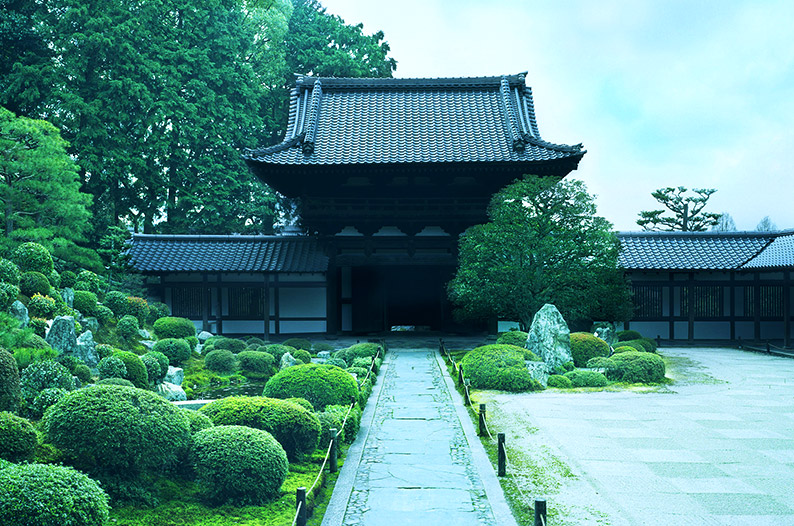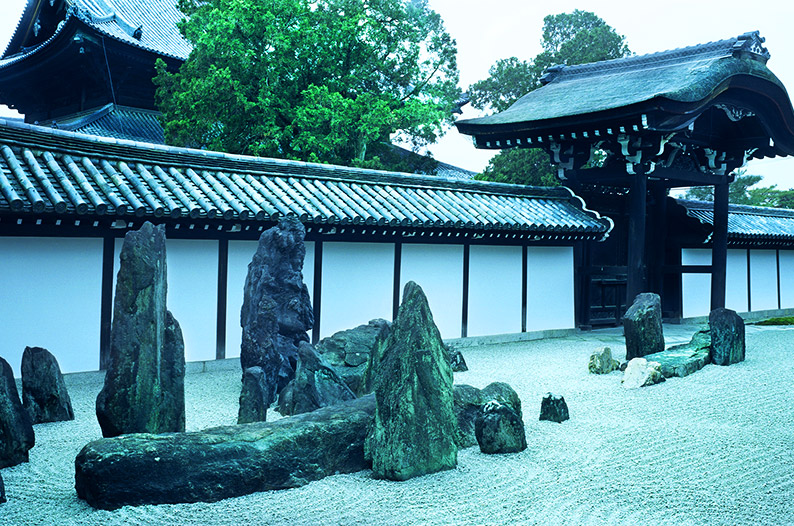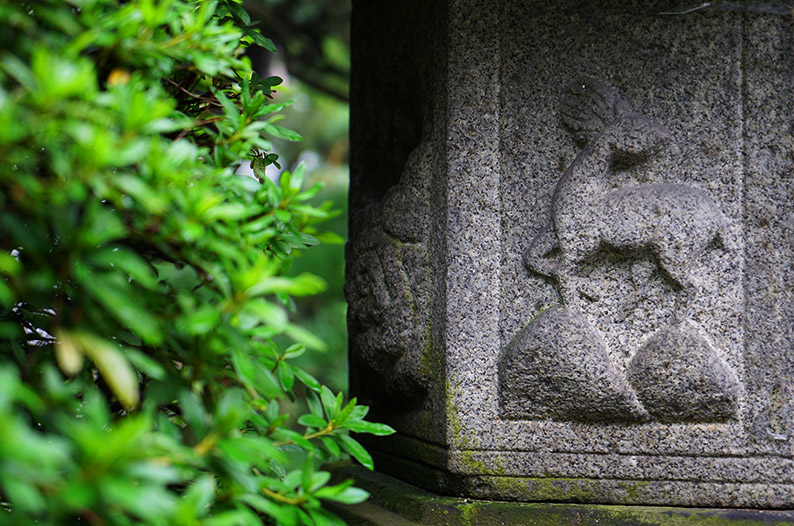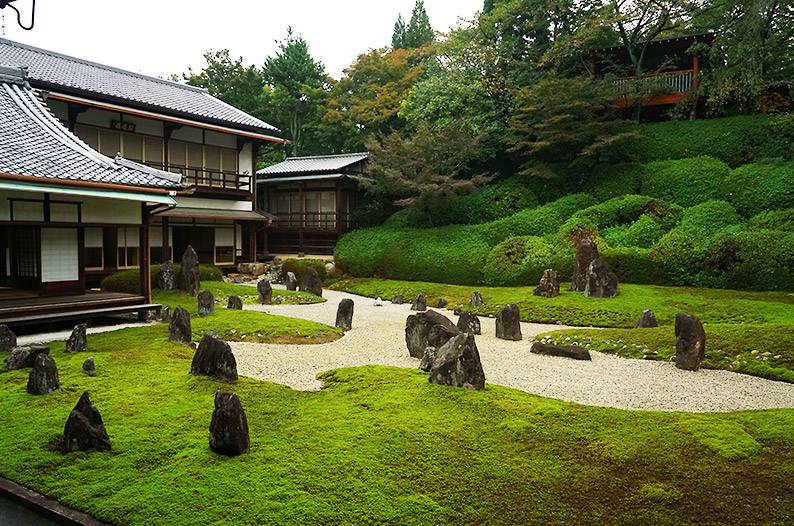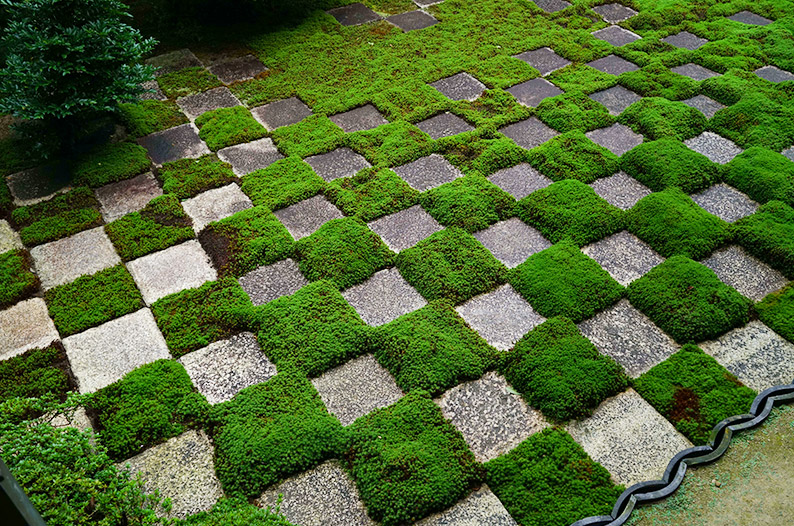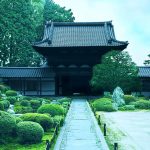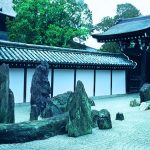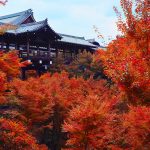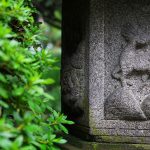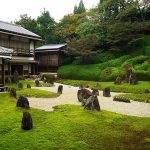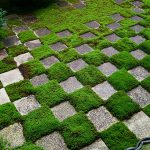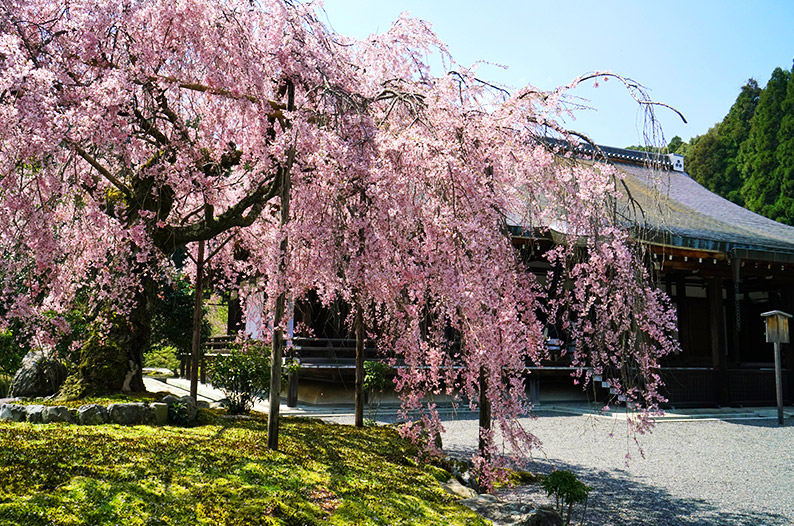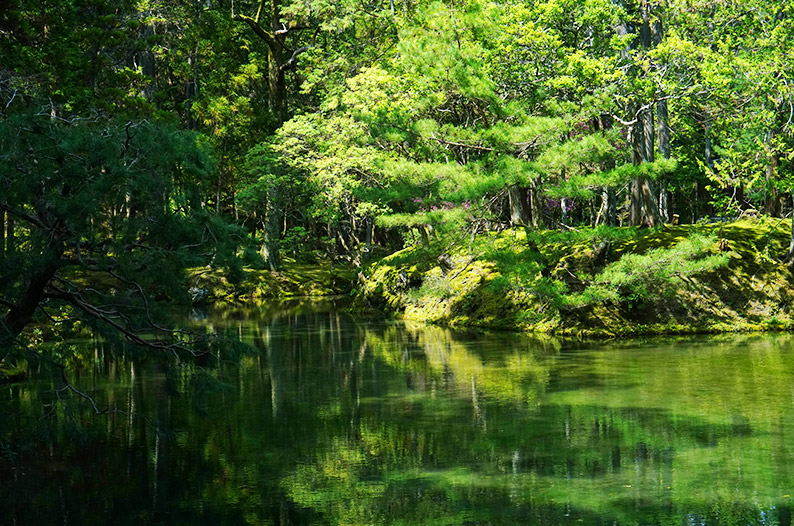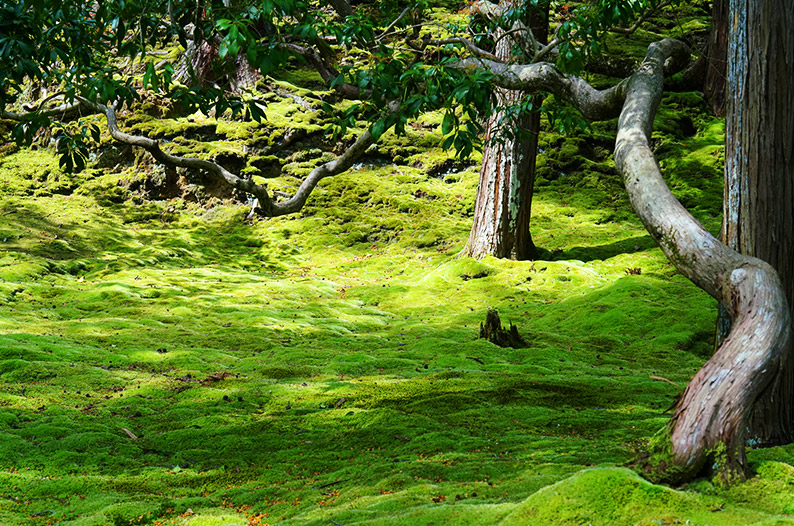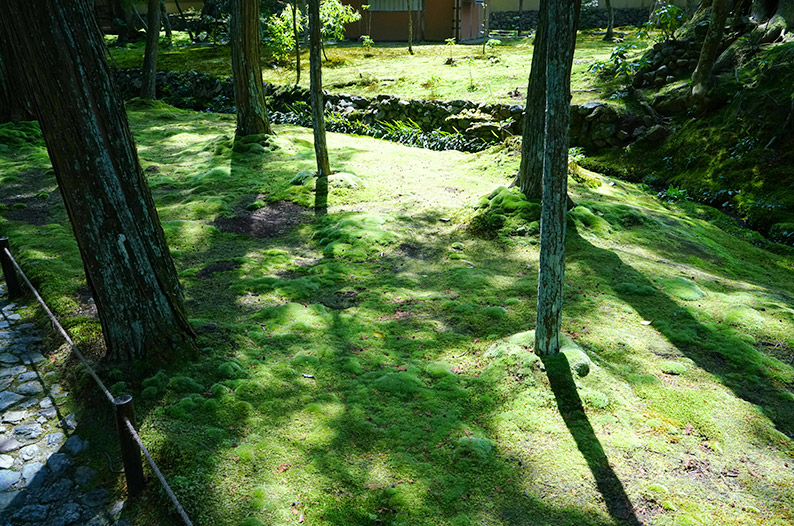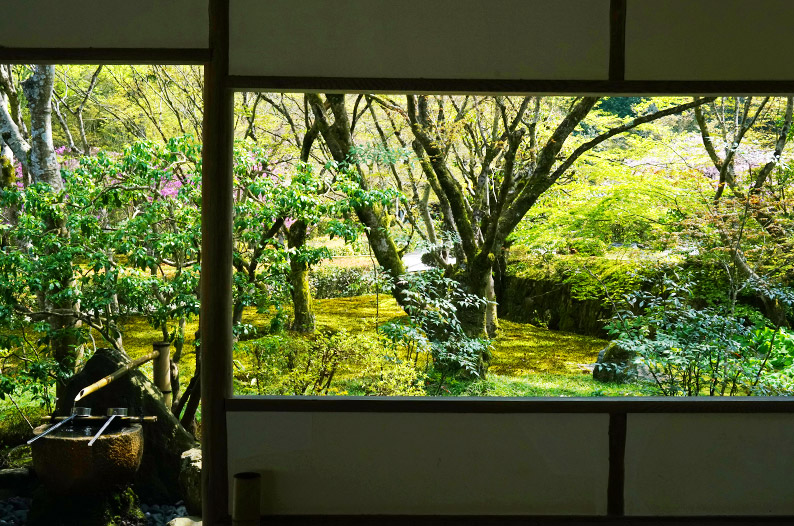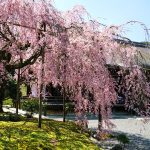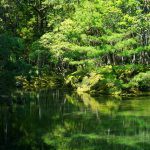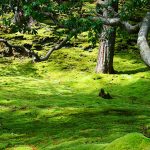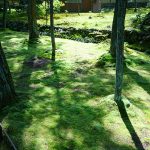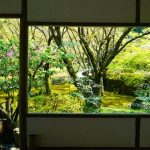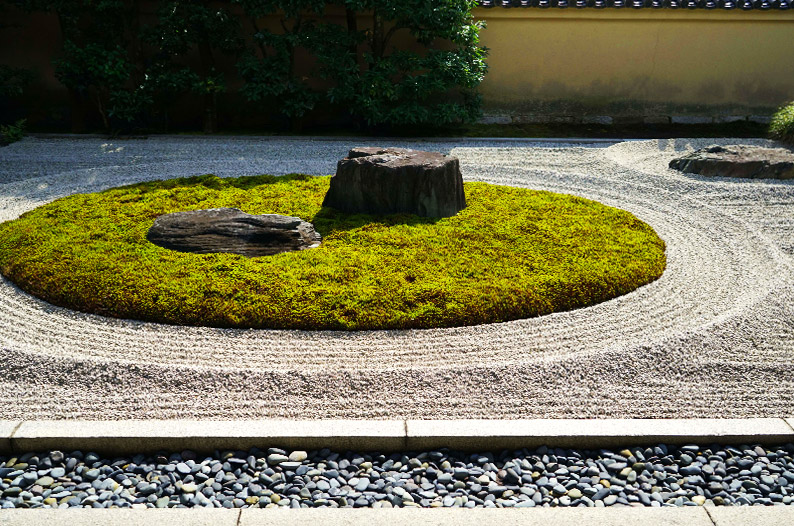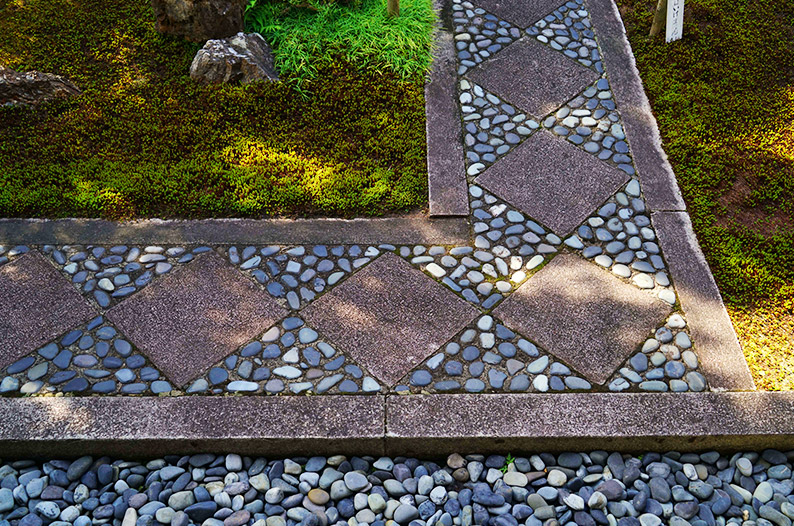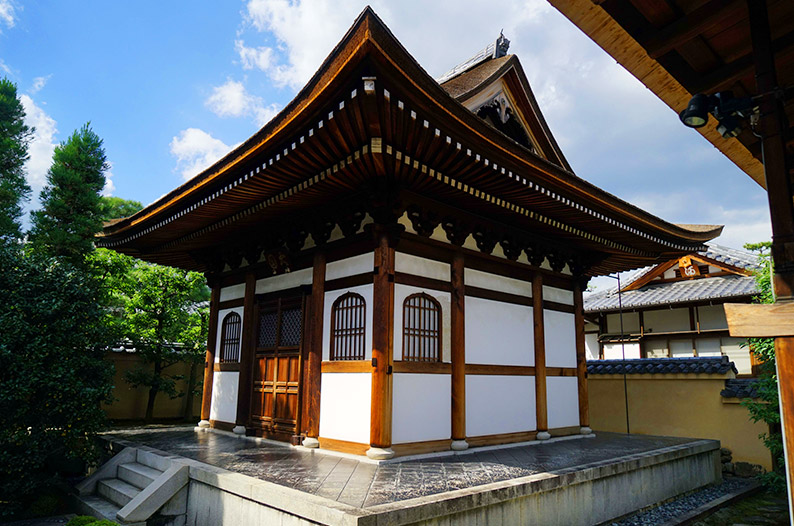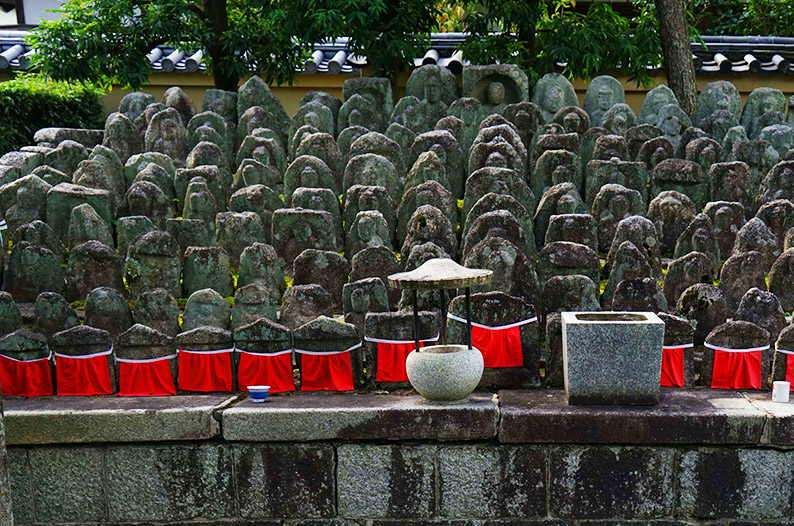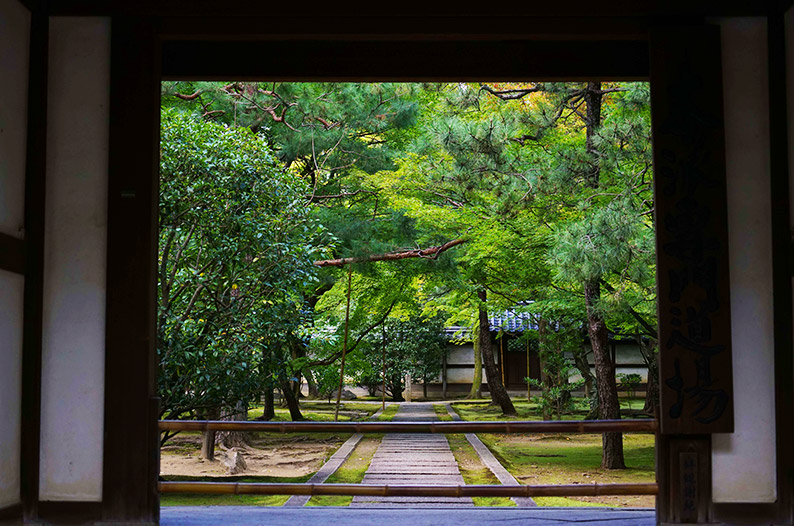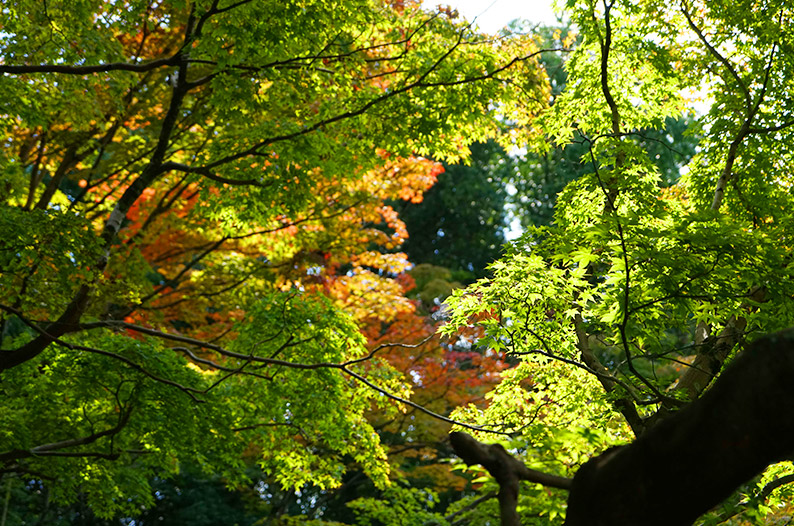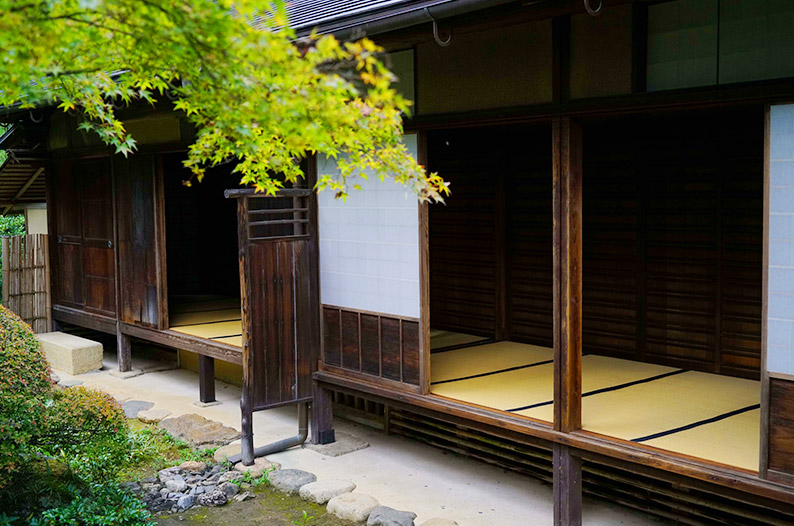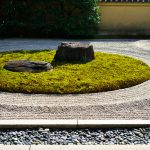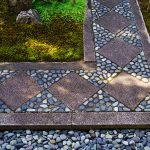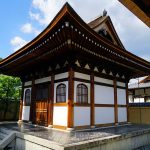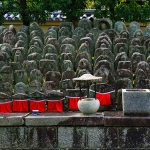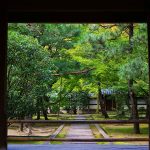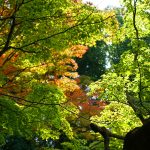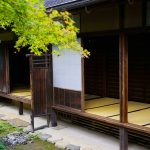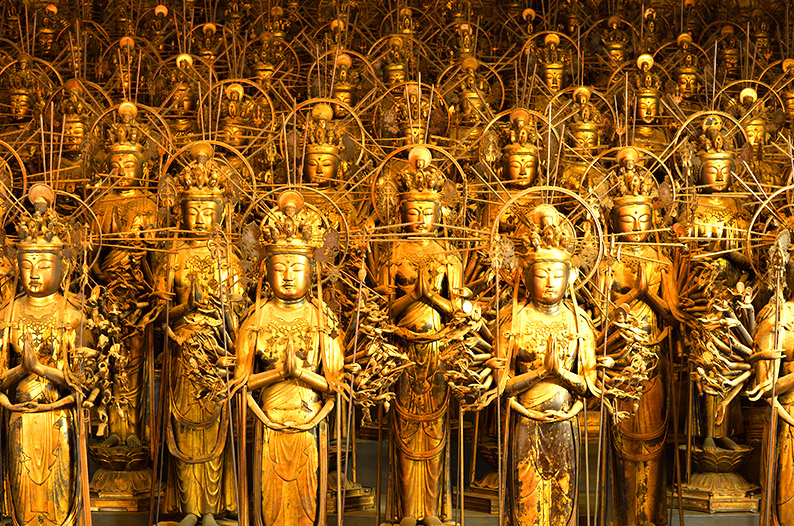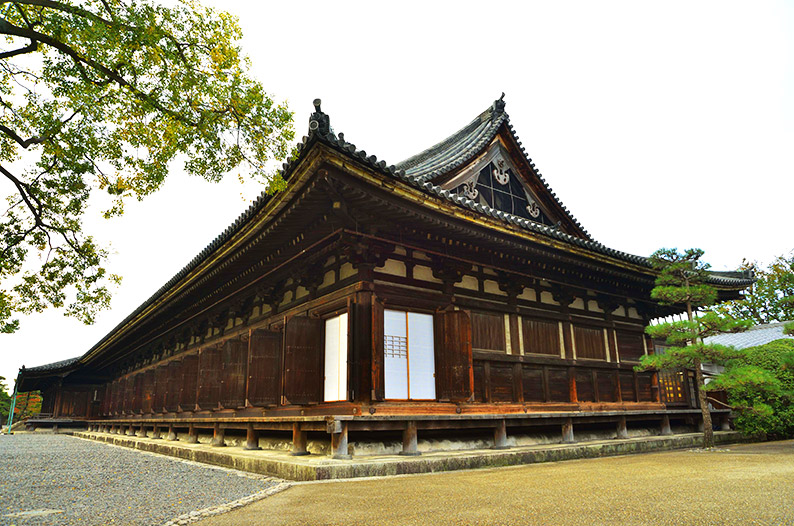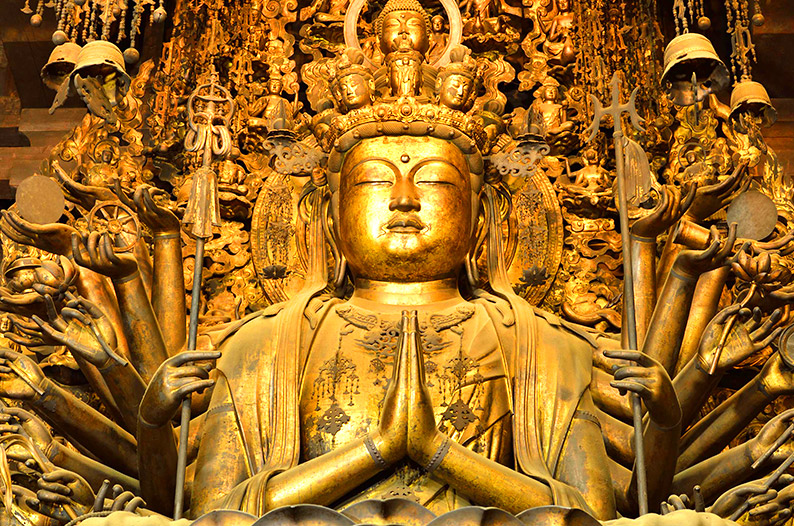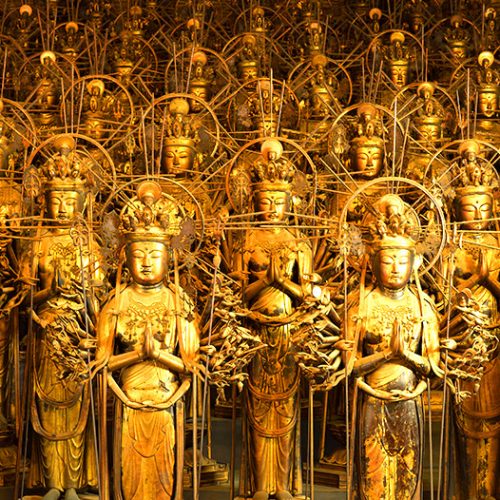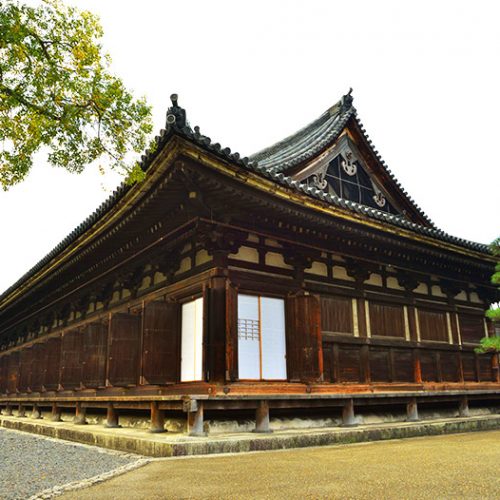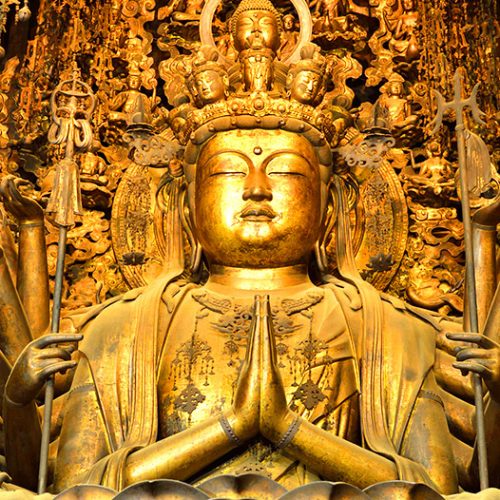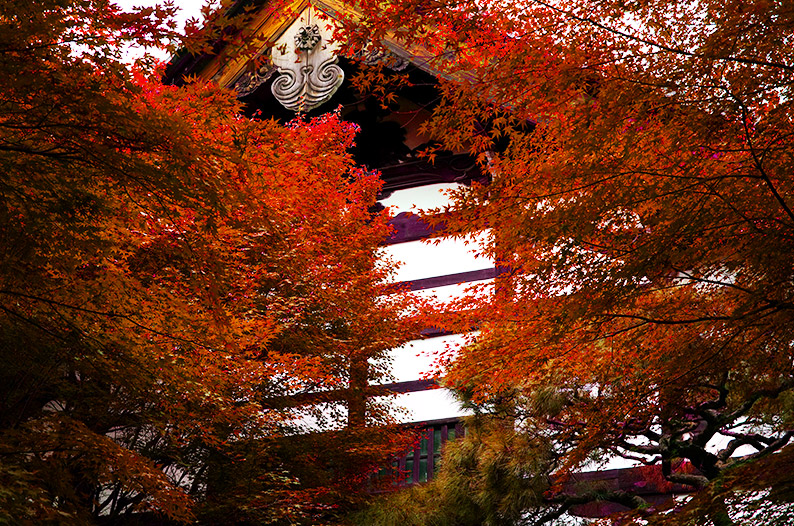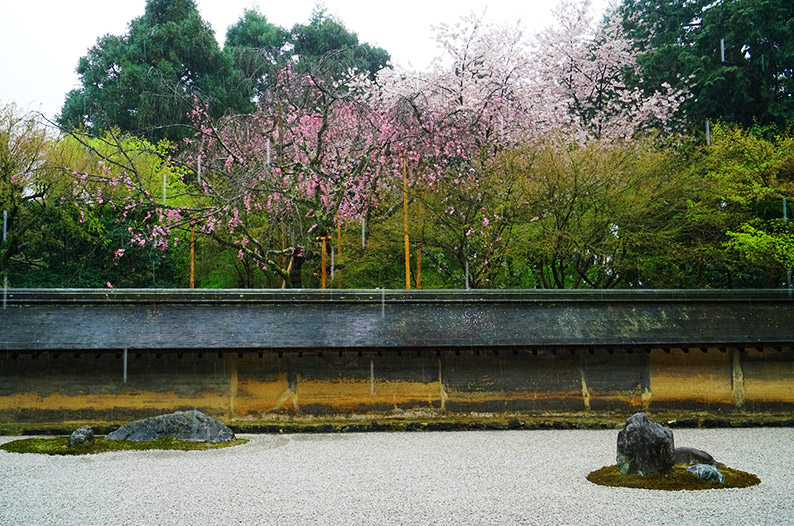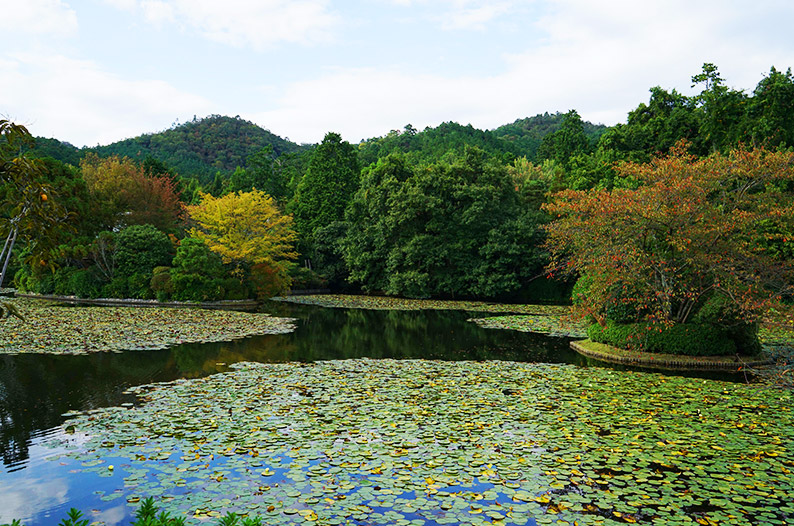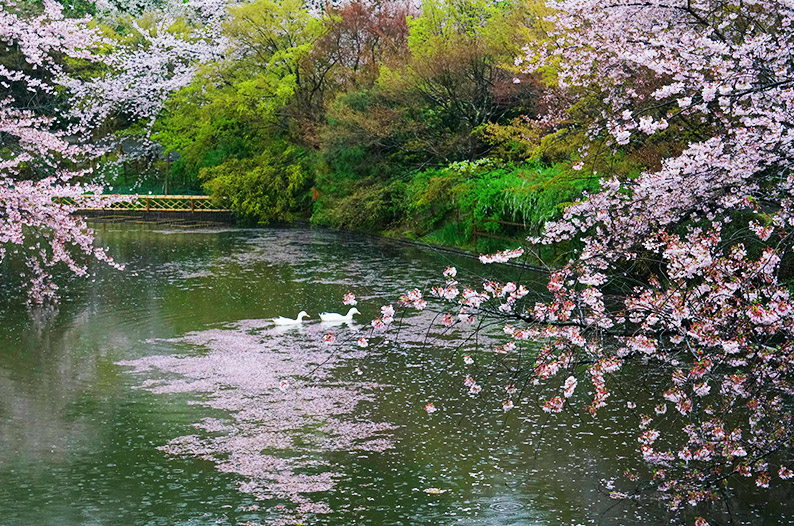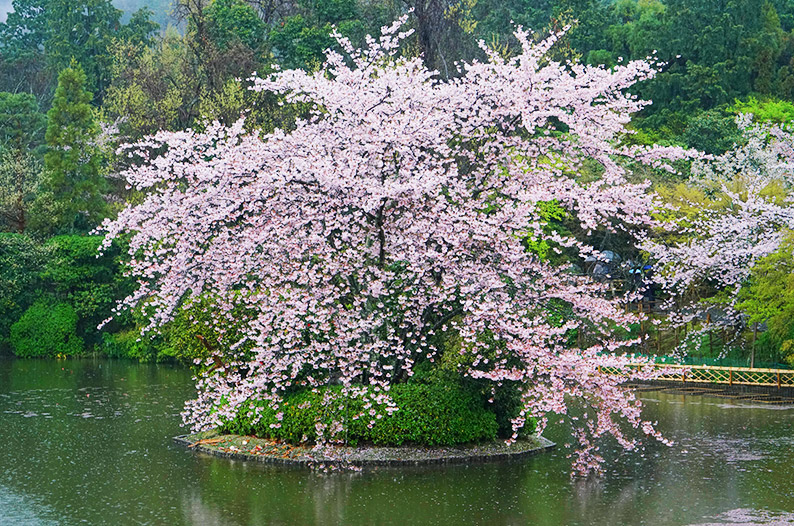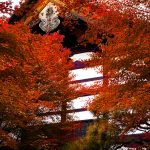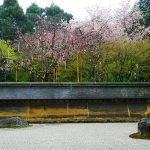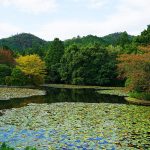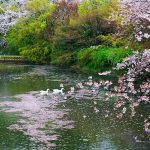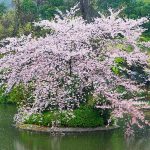Recommended Temples in KYOTO
Since Buddhism was brought to Japan in 538, it’s been divided into many denominations over the centuries. In Kyoto, there are over 3,000 temples. Here, we’ll introduce a few that have been registered as national treasures or world heritage sites.
1. Tofukuji Temple
Tofukuji Temple is reputed for its beautiful autumn leaves. Tsutenkyo, the long corridor that runs from the south to the north of the grounds, offers a stunning view of the maple forest. If you look closely, you’ll see golden leaves as well as red crimson ones. If the end of the leaf breaks into three, the leaf is from a Tsuten maple tree, which the founder of Tofukuji introduced to Japan from China.
Starting with the Sanmon gates, a national treasure, the temple is full of rare buildings. We particularly recommend visiting the Hojo, the residence of the chief priest, as there are different gardens on each of the four sides of the building, designed by Shigemori Mirei, who worked from the 1920s to 70s. From the north garden’s moss and paving stones that create the Japanese traditional checkered pattern, to the stone pillar representing the Big Dipper in the East garden, the area is a unique blend of the modern and traditional.
Tofukuji Temple
778 Honmachi, Higashiyama-ku, Kyoto-shi
TEL: 075-561-0087
http://www.tofukuji.jp/english/index.html
2. Saihoji Temple
Despite its popularity, few have actually visited Saihoji Temple. This may be because visitors need to register by sending a postcard, making it more difficult than visiting other temples. Nevertheless, Saihoji Temple is reputed for its beauty, and most Japanese hope to visit at least once in their lifetime.
What’s so beautiful here? The moss. The garden, centered around a pond, is covered in a green carpet of moss, giving Saihoji its nickname as the Moss Temple. If you look closely, you’ll realize that it’s not just one type of moss, but over 120 types growing together. As the wind blows, the trees sway and the sunlight shines through the branches, allowing subtle changes in the color of the moss.
While autumn, when visitors will be treated to a stunning contrast of red autumn leaves, a rainy day is the best time to visit the Moss Temple. The wet moss has a lively vitality to it, which gives the garden a surreal beauty.
Visitors must register. From Japan, use a return postcard; from overseas, use airmail and include a self-addressed return envelope.
Saihoji Temple
56 Jingatani-cho, Matsuo, Nishikyo-ku, Kyoto-shi
TEL: 075-391-3631
http://www.tofukuji.jp/english/index.html
3. Daitokuji Temple
Built in the first half of the 14th century, Daitokuji Temple gained popularity in the 16th century after the funeral of warlord Nobunaga Oda was held here, with tea masters, wealthy merchants and other powerful figures becoming supporters. Its spacious grounds are home to many large pine trees, giving the air a green scent of purity.
The first place to visit is the Hojo Garden, completed in 1635 and designated a national treasure. One of Japan’s best dry landscape gardens, the pair of cones made with white sand leave a distinctive impression. The imposing grand gate at the front of the garden, relocated from Hideyoshi Toyotomi’s mansion (who came to power after Nobunaga), is an extravagant, vividly colored sculpture.
On the temple grounds, there are over 20 towers. Four of these can be entered, each with its own stunning garden.
Daitokuji Temple
53 Murasakino Daitokuji-cho, Kita-ku, Kyoto-shi
TEL: 075-491-0019
http://zen.rinnou.net/head_temples/07daitoku.html
4. Sanjusangen-do
Officially known as Rengeoin, Sanjusangen-do is the alias of the Main Hall. This hall is 120 meters wide and features 1,000 standing statues of Guanyin (Goddess of Compassion), each with 11 faces and 40 hands. You’ll hold your breath at the sight of the stunning gold statues, illuminated by the light diffused through the sliding paper doors. Each of the statues have a unique facial expression – the saying goes that there’s always one statue that looks like the person you want to meet.
Surrounded by the standing Guanyin statues is the main statue of the Thousand Armed Guanyin. More than three meters tall, Guanyin’s benevolence comes through her calm expression and relaxed pose. In front of the Guanyins is a statue of the 28 disciples who followed the Thousand Armed Guanyin and protected the Buddhist teachings. Their clothing, belongings and expressions are fascinating to look at. Along with the statues of the God of Wind and the God of Thunder on either end of the building, the statues of the disciples are also registered as national treasures.
Sanjusangen-do
657 Sanjusangendo, Mawari-machi, Higashiyama-ku, Kyoto-shi
TEL: 075—561-0467
http://www.sanjusangendo.jp (Japanese only)
5. Ryoanji Temple
The Hojo Garden of Ryoanji Temple is one of Japan’s best dry landscape gardens, known throughout Japan and overseas for its beauty. The artist, year of completion and reason behind the design are all unknown, making it a garden surrounded by mystery.
The horizontal garden is rather small, and surrounded by walls. Distinctive patterns are formed in the white sand, in which 15 stones are arranged. The meaning behind these stones, which look as though they’ve been randomly placed, has been a topic of debate over many centuries: a tiger attempting to cross a river with a child on its back; the sand represents the sea, with the stones representing islands; a representation of Buddhist teachings. Sit at the edge of the garden and relax, then empty your mind. Its precision and abstract design allows for your own interpretation.
Ryoanji Temple
13 Ryoanji, Goryonoshita-cho, Ukyō-ku, Kyoto-shi
TEL: 075-463-2216
http://www.ryoanji.jp/top.html
April 30, 2016
- TOPCOLUMNRecommended Temples in KYOTO
- TOPDESTINATIONSKYOTORecommended Temples in KYOTO
